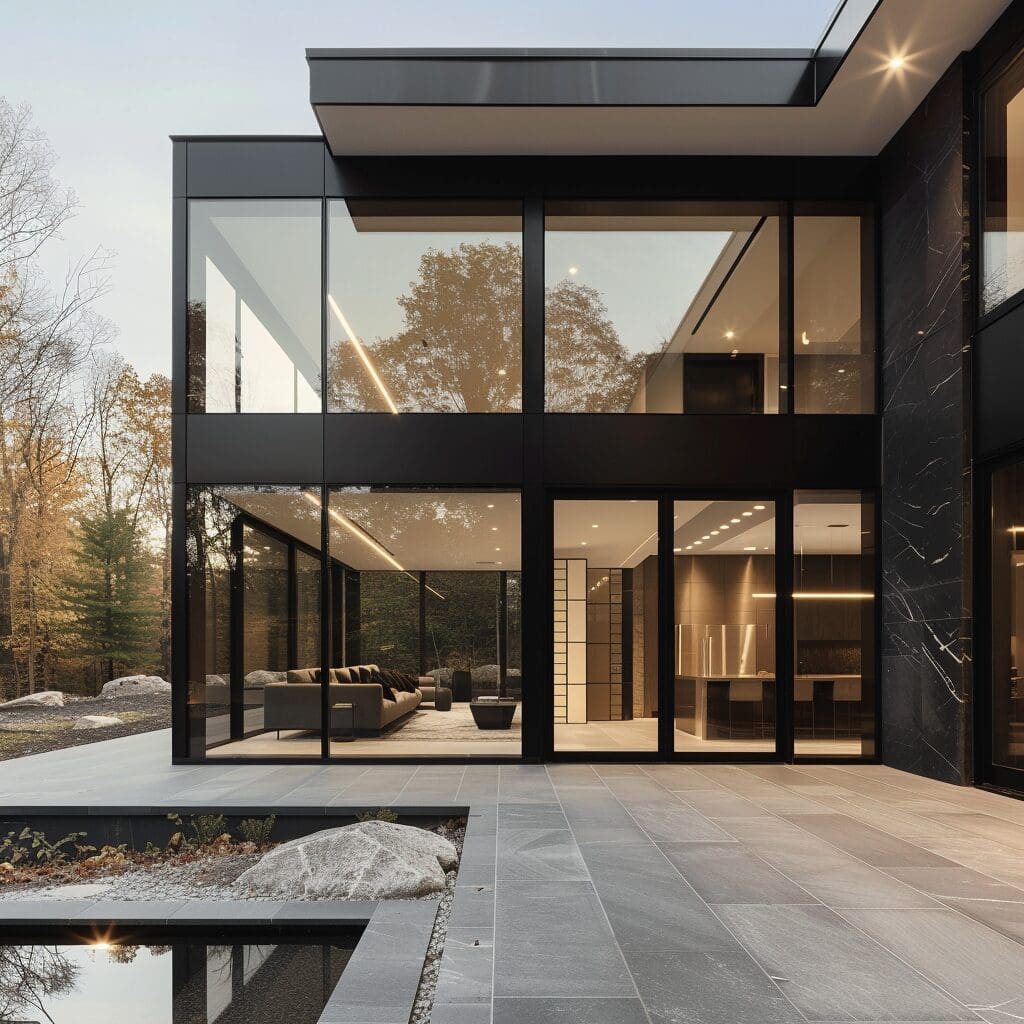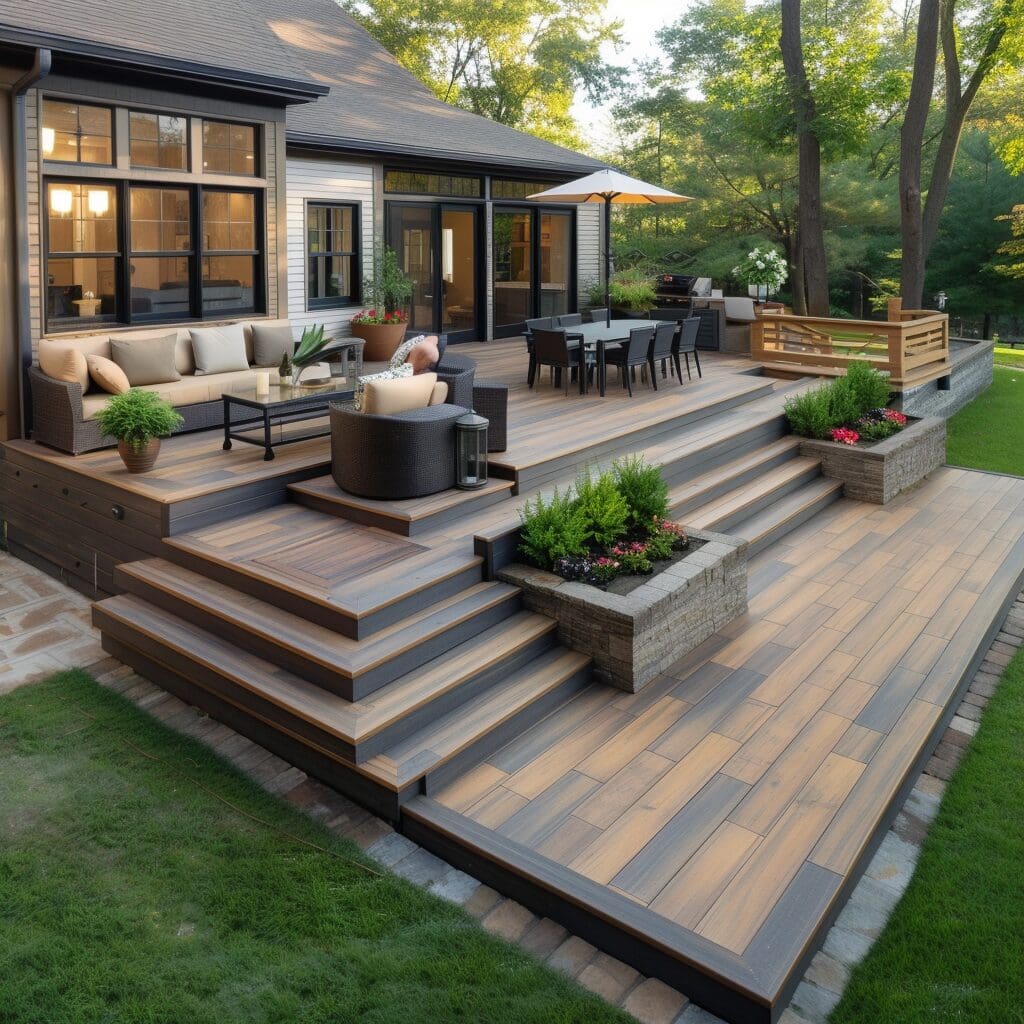Maximize Water Views – Custom Home Design Tips
Owning a waterfront property on Vancouver Island is a dream come true for many. With the island’s stunning ocean vistas, rugged coastline, and tranquil atmosphere, it’s no wonder that custom home builders are often asked to design spaces that capitalize on these breathtaking views.
Strategic Orientation and Placement
One of the most important factors in maximizing water views is the orientation and placement of the home on the property. The positioning of the house should be carefully considered to ensure unobstructed ocean views from key living spaces.
Site Analysis
Start by analyzing the site’s topography, angles of the best views, and natural light patterns. Work with your architect to position the house so that the primary living spaces face the water, with large windows capturing panoramic views of the ocean. This may involve angling the house or moving it closer to the water’s edge to achieve the best vantage points.
Room Orientation
Prioritize water views in the most frequently used rooms, such as the living room, dining area, kitchen, and primary bedroom. Orient these spaces to face the water, ensuring that you wake up, relax, and entertain with the ocean as your backdrop.

Maximizing Windows and Glass Walls
Expansive windows and glass walls are essential to fully immersing your home in its coastal surroundings. Increasing the amount of glazing in the home can create a sense of seamless integration between the interior and exterior spaces.
Floor-to-Ceiling Windows
Installing floor-to-ceiling windows in rooms that face the ocean will allow for unobstructed views and fill the home with natural light. These large glass panes create a frame for the water, making it the focal point of each space. They also help to establish a strong connection between the home and its natural environment.
Glass Doors and Retractable Walls
Consider incorporating sliding glass doors or retractable walls that can open entirely to the outdoors. This design strategy enhances the feeling of openness, allowing ocean breezes and natural sounds to flow into the home. It also creates a seamless transition between indoor and outdoor living areas, perfect for enjoying Vancouver Island’s mild climate.
Open-Concept Layouts
An open-concept floor plan is ideal for waterfront homes as it allows for continuous water views throughout the interior. Eliminating walls and barriers between spaces ensures that ocean views are accessible from multiple vantage points, even in areas farther from the windows.
Connected Living Spaces:
An open-concept layout connects the kitchen, dining area, and living room, creating a unified space. Fewer interior walls preserve sightlines to the ocean, and natural light can flow freely between the rooms. This design fosters a sense of openness, making the home feel more spacious.
Minimalistic Design
Opt for a minimalist interior design with clean lines and neutral colours that don’t compete with outside views. Light, airy furniture and simple décor can keep the focus on the water’s natural beauty.
Outdoor Living Areas
A custom waterfront home wouldn’t be complete without outdoor living spaces that make the most of the island’s spectacular scenery. Thoughtful patios, decks, and terrace designs can enhance your enjoyment of the property’s water views while providing additional areas for relaxation and entertainment.
Ocean-Facing Decks and Patios
Enhance your living space with expansive, ocean-facing decks or patios. Furnish these areas with comfortable seating, dining spaces, and perhaps even an outdoor kitchen, allowing you to dine and entertain while taking in the stunning surroundings. Consider glass railings for unobstructed views and to maintain a sleek, modern aesthetic.
Multi-Level Outdoor Spaces:
If your property is on a slope, consider using multi-level decks or terraces to offer different perspectives of the water. Each level can offer a unique view, creating a dynamic and versatile outdoor environment.

Natural Materials and Coastal Resilience
When building a waterfront home, it is important to select materials that complement the natural surroundings while being resilient to the coastal environment. Coastal homes on Vancouver Island must withstand exposure to salt air, moisture, and strong winds, so choosing durable materials is essential.
Natural, Sustainable Materials:
Incorporate materials like wood and stone that harmonize with the coastal landscape. Cedar, which is widely available on Vancouver Island, is an excellent choice for exterior siding and decks. Stone can be used for fireplaces, patios, or pathways, providing a natural, earthy feel that blends seamlessly with the outdoor environment.
Weather-Resistant Design:
Select materials that can withstand the harsh coastal conditions. Marine-grade stainless steel, composite decking, and corrosion-resistant finishes are wise choices for exterior elements, such as railings, window frames, and hardware. Additionally, ensure that your home is adequately sealed and insulated to prevent moisture intrusion and protect against the elements.
Conclusion
Designing a custom waterfront home on Vancouver Island presents an opportunity to fully embrace the natural beauty and create a living space that maximizes its stunning ocean views.
By carefully considering the home’s orientation, incorporating expansive windows and open-concept layouts, and thoughtfully designing outdoor living spaces, you can maximize your connection to the water. Additionally, using natural materials and building with coastal resilience in mind will ensure that your home not only looks beautiful but also stands the test of time in this unique environment.
With the right design strategies, your waterfront home will become a peaceful retreat that fully immerses you in the breathtaking surroundings of Vancouver Island.